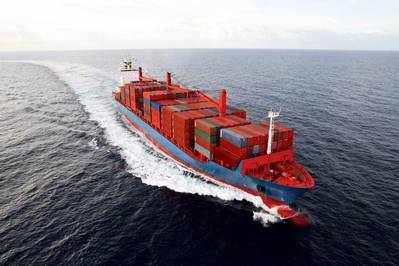Marine Insurance’s Risk Rating Revolution
Why insurers cannot afford to be left behind
According to Maersk, “everything that can be digitized will be digitized”, and there is no doubt that the world of shipping is currently undergoing a digital revolution. From vessel movement data to port statistics and engine diagnostics and data, the latest technology empowers insurers to segment and optimize their existing portfolio, identify new opportunities and offer truly connected policies.
However, risk measurement and ratings remain an issue. As things stand, the marine insurance market measures risk using standardized static rating factors: class, flag and tonnage of the vessel, as well as the year the vessel was built and which yard it was built in. With this limited set of data and an approach to risk analysis that has become widespread, insurers are limiting their ability to innovate, leading to standardized product offerings, broad coverages and downward pressure on pricing.
An increase in mega ships has increased capacity, leading to rate reductions and but the entire industry has settled on a standardized approach to risk with little scope for doing things differently. Furthermore, as an intermediated market, it is estimated that 28 parties are involved in a single shipping transaction. If the marine insurance industry is to prosper in the new digital age, these hurdles – rating factors, innovation and operating costs – need to be overcome.
The potential of blockchain and digital placement technologies to compress and automate the current value chain is well known. However, this is only one part of the story. Unless companies invest to impact loss ratios and innovate to deal with market pressures, any reduction in the cost of doing business will only have limited impact. The answer, as we have seen in other lines of business, is data and analytics technology.
Behavior Is a Better Indicator of Risk
As well as traditional information, such as vessel type and age, there are now vast data sets covering the behavioral features of fleets and vessels. With the right technology, it's now possible to combine these data sets with existing exposure and loss history, to identify new behavioral risk attributes that are a more accurate representation of underlying portfolio risk, than market ‘rules of thumb’. By adopting these new insights, re/insurers can reduce loss ratios, while at the same time increasing net earned premium in three steps:
- Segment and optimize the portfolio
- Identify new sources of risk and opportunity
- Innovate with new products targeted to specific segments
Individual insurers will get ahead of the competition if they adopt this new approach, but for real change to take effect, all actors in the insurance value chain – from broker, to insurer, to reinsurer, need to adopt this new way of working. In other lines of business, such as P&C, we have seen investment in modelling and data resulting in a change in market dynamics. Transaction conversations and risk transfer become data driven and, over time, technical modelled loss ratios and the release of new views of risk, impact pricing and shift authority towards those with the greatest insights.
Catastrophe events cause intermittent hardening of rates but lead to the release of new views of risk, continuing to fuel the conversation in the minds of the market and reinforce the need for data and analytics. Marine underwriters are facing an entirely different dynamic to their counterparts. Apart from events like Hurricane Sandy, marine insurance doesn't face regular catastrophic losses on the same scale as other lines of business. In addition, with most actors using the same methodologies for measuring and rating, the market has settled on a standardized approach to pricing and competition which has led to coverages that are global in nature, with few exclusions.
When we consider the impact of data and analytics on the marine insurance market, it’s lazy logic to conclude that insurers can simply make a better argument for an increase in pricing or risk selection. The likely outcome of such an action would see the business simply being taken to another market. Indeed, some major hull accounts have recently been lost to other markets as Lloyd’s attempts to harden its pricing. A better application of this technology, in the medium term, is in leveraging data-driven insights to optimize your existing portfolio.
Segmenting and Optimizing Your Existing Portfolio
Most insurers assess portfolios and allocate capital today based on a mixture of underwriting experience, claims history and weighting factors such as vessel type, tonnage, year built, yard built. In effect, this means that portfolios are segmented arbitrarily, based on factors that do not adequately reflect the nature of the underlying risk. For example, passenger vessels would carry a weighting, but, of course, passenger vessels are made up of large cruise liners, as well as smaller craft.
In effect, this means that insurers can only ever have a limited understanding on the nature of risk in their portfolios, creating the risk of unknowns and leading to allocation methodologies that are inefficient. By its very nature, marine risk is behavioral, it moves around, and claims are caused by a range of real-time incidents such as where the vessel has been, crew negligence, collision, machinery breakdown, piracy, etc.
With big data analytics platforms, insurers can now combine existing methodologies with claims history and vast third-party data sets to identify new correlations that better reflect the nature of the underlying risk. As well as considering every vessel type, it is now possible to analyze individual vessel and fleet behavior over time to identify the impact of these behaviors on claims frequency and severity. For example, companies can identify the relative weighting of factors, such as vessel area of operation, number of port visits, days at sea, high-risk zone incursion, mileage, time laid up, etc.
Using these new correlations, insurers can build new views of marine risk encompassing specific, detailed parameters and ultimately identify what characteristics indicate low risk or high risk. Applying this new methodology at the portfolio level, new segments can be identified, and their relative risk weighting calculated, leading to more efficient capital allocation and a portfolio-first approach to underwriting strategy. Moreover, with increased segmentation of the portfolio and a deeper understanding of loss behavior, companies can take a more targeted approach to outwards reinsurance, potentially resulting in an increase in Fac for certain segments.
Identifying New Sources of Risk and Opportunity
A natural consequence of moving to a data-driven approach in the marine market, is a sudden differentiated view of marine risk to other market competitors. For those companies who act early, this knowledge can be used to aggressively develop business within the existing capacity limits in three principal ways.
First, part of identifying the characteristics that drive portfolio loss is also identifying the mix of characteristics that would impact the portfolio in a positive way. Companies can then use data science technologies to search global fleet and claims databases against these selection criteria, to identify target accounts that have a positive impact on the portfolio.
Second, we have already discussed the standardized approach to rating that is prevalent in the marine insurance market. For companies who embrace data and analytics, accounts that have been discriminated against by ‘rule of thumb’ biases, now become new opportunities. By being able to analyze the unique risk profile of every fleet and understand its impact to the portfolio, companies can search out new opportunities that the market has designated as high-risk and increase revenue as a result.
Third, as companies use this data more and more and gain deeper and deeper understanding of loss behavior, they will start to spot new opportunities for composite marine programs. In a break from the global, annual policies that are prevalent in the market today, these companies will be able to assess the risk profile of the customer and recommend unique composite coverages that reflect their needs. Not only will these new products generate additional revenue streams but will also serve to change market dynamics and put the power of selection and pricing back in the hands of the underwriter.
Connected Insurance
Once you’ve identified these new sources of risk and opportunity, what is the next step to turn this opportunity into something tangible? The answer is connected policies, targeted coverage that reflects what a vessel is doing at any given point in time.
Taking this connected policy to the next level, by tapping into behavioral data, you can create situational connected policies. For example, if ports are important to your portfolio, you could create a new rating type, or notification process, when a vessel enters a port. So, in addition to the traditional war zone incursions, which are one of the most profitable areas of marine insurance, you can start to offer similar coverage types to different areas.
At its most advanced, the connected policy can leverage sensors on board an existing vessel to stream precise, and real-time, data about movements, geographical location and even machinery health. In this scenario, insurers are truly connected to the bridge of the vessel and can offer smart, connected policies, that could flex dependent on the behavior of a vessel at any point in time. Not only will this lead to more targeted capital and reinsurance, it will also drive down operating costs through greater automation of processes.
 Mark Phillips is Head of Sales at Concirrus. As a strategic sales specialist and innovator, Phillips has experience in catastrophe risk modelling. Between 2011-2016 he worked at RMS with the London, Lloyd’s and European insurance markets to help insurers develop more sophisticated risk models and adopt complex new technologies. His recent expertise also includes working with technology and insurtech startups, helping them to develop more powerful and compelling value propositions.
Mark Phillips is Head of Sales at Concirrus. As a strategic sales specialist and innovator, Phillips has experience in catastrophe risk modelling. Between 2011-2016 he worked at RMS with the London, Lloyd’s and European insurance markets to help insurers develop more sophisticated risk models and adopt complex new technologies. His recent expertise also includes working with technology and insurtech startups, helping them to develop more powerful and compelling value propositions.














